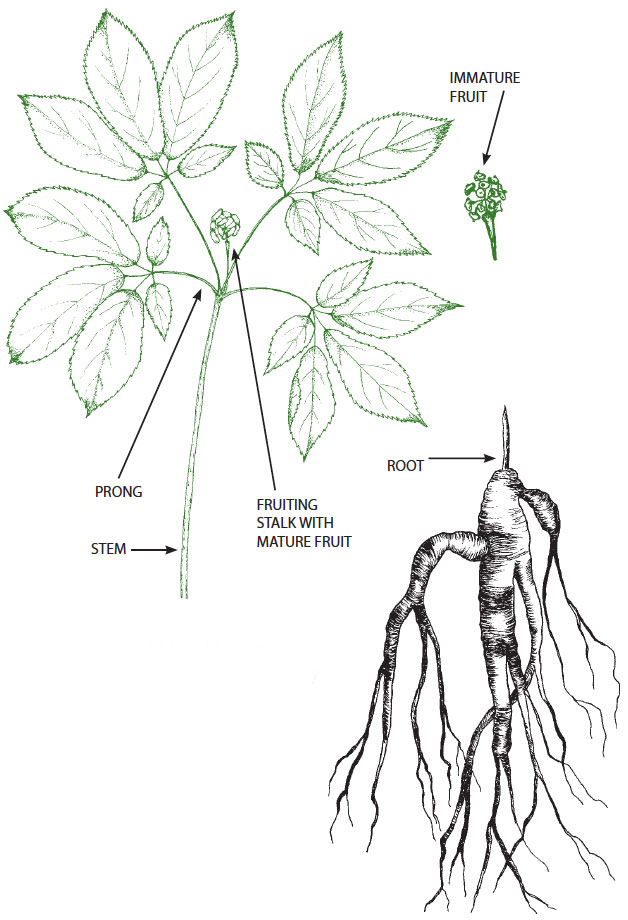Title
Where can I legally harvest ginseng in Missouri?
Harvesting ginseng on most state and federal lands is prohibited.
You may not harvest ginseng on any property owned or managed by MDC.
You may harvest ginseng on privately owned lands with the owner’s permission.
You do not need a license to harvest ginseng on private property, but get the property owner’s permission before searching for or collecting ginseng. Without permission, you are subject to prosecution for trespassing and/or theft.
Title
When can I harvest and possess ginseng in Missouri?
Wild ginseng may be harvested September 1 to December 31.
Dates for the purchase, sale, or transport of ginseng:
- Wet (undried) ginseng: September 1 to March 15
- Dried ginseng: September 15 to March 15
Certified roots may be possessed, purchased, sold, transported, or exported year-round.
Title
When must ginseng be certified?
Wild and cultivated Missouri ginseng must be certified by MDC:
- When ginseng plants or roots are shipped out of Missouri.
- When roots will be held between March 15 and September 1.
Roots imported from other states, territories, or countries must have an appropriate certificate of origin.
To certify roots: Contact your local MDC conservation agent.
Title
What is the procedure for legally harvesting ginseng?
- Take only mature plants and roots with at least three true leaves (prongs). See diagram.
- Keep the fruiting stalk and stem (but not the mature fruits or seeds) with the plant until it is within your home or place of business. This will provide proof to law enforcement agents that the plants you took were of legal age.
- Plant the seeds from each harvested plant within 100 feet of the parent plant.
Planting Instructions:
- Squeeze the seeds from the red fruits.
- Plant seeds within 100 feet from where the parent plant was harvested to ensure seeds are in suitable habitat.
- Place seeds at least 6 inches apart and about one-half-inch deep in the soil.
- Cover the seeds with leaf litter.
A ginseng plant does not produce seeds until it is about five years old. By taking only mature plants and planting their seeds, you help ensure ginseng will continue to thrive in the areas from where it is collected. Furthermore, young ginseng plants do not produce roots with high commercial value. The roots of larger, older plants are more valuable and contain a higher concentration of ginsenosides, the main ingredient that gives ginseng its medicinal properties.
Guidelines for maintaining healthy ginseng populations:
- Collect only from areas where several large plants are growing.
- Leave many plants behind to maintain a future population.
- Do not disturb young plants.
- Always plant mature seeds from the ginseng plants you harvest.
Regulations for Ginseng Dealers
Registration of ginseng dealers provides MDC with important information about the annual harvest of Missouri’s wild ginseng.
- Any person, group, or business that purchases ginseng roots in Missouri for resale is considered a ginseng dealer unless the person does not maintain a ginseng business address in Missouri and is registered as a dealer in another state.
- All Missouri ginseng dealers must register with MDC annually.
- Dealers must provide quarterly reports of all transactions and an annual inventory report.
- To obtain the required forms, contact the state botanist.
For more information, contact:
Resource Science Division
Missouri Department of Conservation
PO Box 180
Jefferson City, MO 65102-0180
573-751-4115
Or email questions to the state botanist at Malissa.Briggler@mdc.mo.gov.
Regulations as of March 1, 2019























